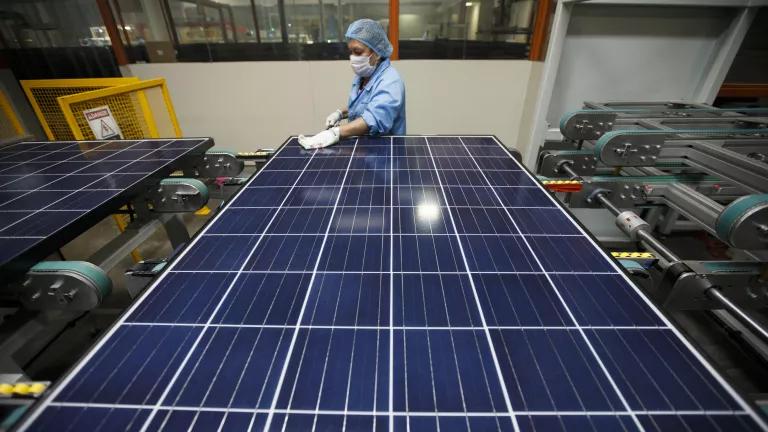The documentary Chasing Ice premieres in New York today, and the timing couldn't be more provident. Local and state government leaders, still busy guiding communities out from under the wreckage of Sandy, are talking about the need for action on climate change. A newly invigorated President Obama now has an opportunity to create federal leadership on the issue. If the superstorm that swamped one of the world's great cities, killed more than 100 people, racked up $33 billion in economic losses in New York alone, and has still left tens of thousands without power, isn't enough to prompt national action on global warming, then perhaps what we need is a movie about melting ice to drive the point home.
Chasing Ice could become the next Inconvenient Truth. It tells the story of photographer James Balog, who has been working since 2007 to document vanishing glaciers in the Arctic. Balog, a prominent nature photographer, had been skeptical about climate change until a National Geographic assignment sent him to the Arctic. What he witnessed there not only erased his doubts, it motivated him to gather more evidence of global warming to share with the world.
Balog and his team labored for years to place specially designed solar-powered time-lapse cameras in some of the most remote, icy locations in the world. Director Jeff Orlowski worked with Balog as part of the Extreme Ice Expedition, filming documentary footage along the way, but never dreaming that he would make a major motion picture. (Orlowski, by the way, also won an NRDC/MTV-sponsored essay contest as a teenager in 2004). Initially the team wasn't sure what they would find--if their untested time-lapse cameras would work in such harsh conditions (sometimes they didn't), and even if they did, would the changing ice be dramatic enough to make people notice?
Was it ever. Balog's mission began as an attempt to gather evidence. It ended up being a race to document a landscape before it disappears. I've seen evidence of a vanishing glacier in Peru, and the changing face of a mountain over a few decades shocked me. But in Chasing Ice, we see the ice disappearing in a matter of a few years--not decades. Ice is there one minute, and gone the next, leaving only a wet, gray, gravel behind. The time-lapse photography provides the kind of direct, eyewitness evidence of global warming that few of us will ever see in daily life.
Yes, we will experience some of the more destructive, attention-grabbing impacts of climate change -- the uptick in hurricanes, floods, and wildfires; the spread of mosquito-borne illness, allergies, and disease. A hurricane that swamps New York is certain to dominate the news cycle. A melting hunk of Arctic ice--not so much. Yet there is a story to be told there, too, a remote, chillier, and less human story, but in the right hands, another compelling reminder of how very powerful a force climate change is. The same global trend that turns dangerous, once-in-a-century storms into events of alarming frequency, has also been relentlessly chipping away at the cap of ice that has topped our planet for millennia.
The movie is visually stunning (no surprise that it won a cinematography award at Sundance) and the story is inspiring. By taking us along on this Arctic quest, the film gives more people the opportunity to experience, as Balog did years ago, a change of heart, and mind, about the reality of global warming.
It also provides hope that it's not too late to stabilize the climate. We are starting to see what global warming looks like--but we're also starting to see what the solutions look like. We're building cars that will soon go twice as far on a gallon of gas, we're making clean, renewable energy from the wind and the sun, we're retrofitting buildings so they can cut their energy use almost in half.
We don't have to be the generation that sat and watched while the ice sheets melted. We know how to put the brakes on climate change. Strong leadership and a bold commitment from the President to cut carbon pollution, reject dirty fuels, and pursue clean energy and energy-efficient solutions will put us on the path to a stable climate. In the meantime, Balog's cameras are still rolling, capturing more evidence, ready to remind us that we can't afford to wait.


